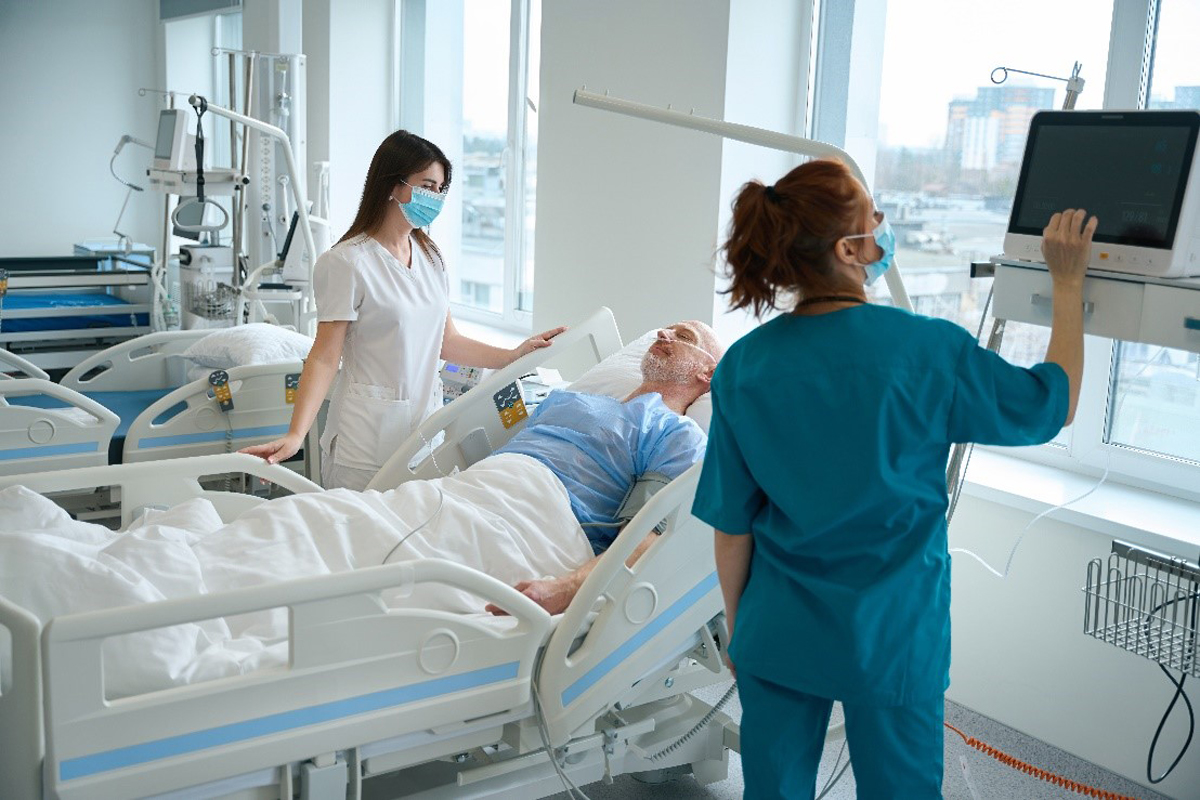Reducing Costs and Speeding Time-to-Market for Medical Cabling Will Enhance Patient Monitoring and Improve Outcomes
Overview
Evolving applications in the medical device and healthcare industries are creating the need for a widening range of cabling configurations to support increasingly diverse connectivity requirements for patient monitoring.
On one hand, there is no “one size fits all” cabling solution and, on the other hand, device makers need to reduce the cost of designing, prototyping, and manufacturing their application-specific cables.
Although the highest percentage of patient monitoring applications continues to be in hospital settings, such as surgical operating rooms, ICUs, emergency rooms, and other in-patient environments, there also is a fast-growing segment for remote monitoring such as paramedics and in-home telemedicine devices.
On one hand, there is no “one size fits all” cabling solution and, on the other hand, device makers need to reduce the cost of designing, prototyping, and manufacturing their application-specific cables.
Although the highest percentage of patient monitoring applications continues to be in hospital settings, such as surgical operating rooms, ICUs, emergency rooms, and other in-patient environments, there also is a fast-growing segment for remote monitoring such as paramedics and in-home telemedicine devices.

Figure 1 – With the rise of AI, what are the impacts on data centers?
Key Challenges
The lack of components off-the-shelf (COTS) standard cable assemblies that can handle the full range of device requirements means most cables need to be custom. However, medical device makers face several challenges for creating customized medical-grade cabling to use with their equipment, including:
- Long lead-times for designing and prototyping custom cables
- High cost of custom tooling
- Significant non-recuring engineering (NRE) expenses
- High minimum order quantities (MOQs) for custom cable assemblies
- Difficult transitions from prototypes to high-volume quality production
New Pre-Qualified, Customizable Cable Technologies are Game Changers
To address these challenges, reduce costs, and speed time-to-market, we introduced our standard off-the-shelf cable assemblies called Interplex SureLine, which established a set of pre-designed, pre-qualified, and tested semi-custom, medical-grade, cabling designs that can be cost-effectively and quickly adapted for any application.
The core architectural approach for Interplex SureLine focuses on these important areas:
The core architectural approach for Interplex SureLine focuses on these important areas:
- Provide pre-designed and tested cabling that eliminates development costs
- Options for two different standards pin counts and connector size
- Integrated keyed interfaces for quick and correct connections
- Built-in strain relief and bend relief with a user friendly ergonomic shape that help the user orientate the connector correctly to the device.
- Quality conformance with IPC/WHMA-A-620 Class II standards
- Sealed for Ingress Protection against dust per IP50 standard
- Easy customization with minimal cost and lead-times
- On-hand stock for both small sample sizes and high-volume production
- Backward completable with a leading Push-Pull connector

Figure 1 – Interplex SureLine Plex 1 (left) and Plex 2 (right) cost-efficient cable assemblies.
Available directly off-the-self, the Interplex SureLine medical-grade circular interconnect products are fully compatible with the widely used LEMO REDEL P1 and P2 connector format. They are available in 14-pole (Plex 1) 34-pole (Plex 2) versions.
Customers can stipulate to have the same connector on both ends of the cable or opt for a connector at one end and bare wires at the other. Depending on requirements, they can choose cable lengths of 3 feet (0.9m), 6 feet (1.8m) and 10 feet (3.05m).
Customers can stipulate to have the same connector on both ends of the cable or opt for a connector at one end and bare wires at the other. Depending on requirements, they can choose cable lengths of 3 feet (0.9m), 6 feet (1.8m) and 10 feet (3.05m).
Interplex SureLine Application Scenario
A medical devices maker needed a cable for initial testing of a new device that had to meet industry standards, required a bend and strain relief, and needed to be aesthetically pleasing, with form factor that resembled a production/commercial cable.
The customer had sent a request for quote to other suppliers and they all quoted significant NRE for custom tooling, along with high costs for MOQ prototype volumes and lead-times over 16 weeks. The Interplex SureLine alternative was quoted as a standard cable that was in stock and available to purchase immediately. The customer placed a PO and had the cable in two days and was able to start testing.
Due to the design and quality, the customer then decided that the same Interplex SureLine cable would be used in production, thereby saving them time and money of having to re-validate. The customer also selected a Interplex SureLine receptacle and used this across the end-to-end prototype, testing, development, and production stages. The bottom line was a reduction of 4 – 8 months, which is critical in the development phase of a start-up product, along with cost savings of $15,000 – 20,000 in custom tooling.
The customer had sent a request for quote to other suppliers and they all quoted significant NRE for custom tooling, along with high costs for MOQ prototype volumes and lead-times over 16 weeks. The Interplex SureLine alternative was quoted as a standard cable that was in stock and available to purchase immediately. The customer placed a PO and had the cable in two days and was able to start testing.
Due to the design and quality, the customer then decided that the same Interplex SureLine cable would be used in production, thereby saving them time and money of having to re-validate. The customer also selected a Interplex SureLine receptacle and used this across the end-to-end prototype, testing, development, and production stages. The bottom line was a reduction of 4 – 8 months, which is critical in the development phase of a start-up product, along with cost savings of $15,000 – 20,000 in custom tooling.
Summary
The Interplex SureLine innovative approach means that OEMs no longer have to worry about the time and financial investment involved for full-custom cabling, to meet high minimum order quantities, or to subsequently carry out extensive testing. Interplex SureLine’s pre-qualified, customizable designs will give them the ability to move from initial samples to volume shipments within just a week.
Though the Interplex SureLine interconnects provide off-the-shelf convenience, there is still plenty of scope to make alterations to the design. Different cable lengths, keying positions, pole numbers and configurations, plus cable jacket and overmold materials can be specified. Various jacket/overmold color options may be selected and the OEM logo added if requested.
Though the Interplex SureLine interconnects provide off-the-shelf convenience, there is still plenty of scope to make alterations to the design. Different cable lengths, keying positions, pole numbers and configurations, plus cable jacket and overmold materials can be specified. Various jacket/overmold color options may be selected and the OEM logo added if requested.




